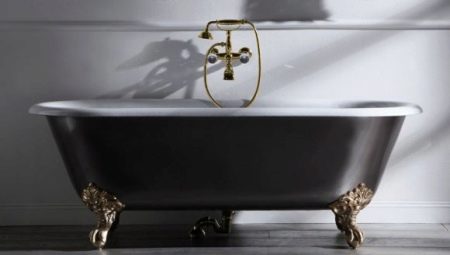Many modern specialists and ordinary consumers still can not agree on which of the materials is optimal in the manufacture of sanitary ware for bathrooms. Our article will help you finally figure out which bath is better: acrylic, steel or cast iron.
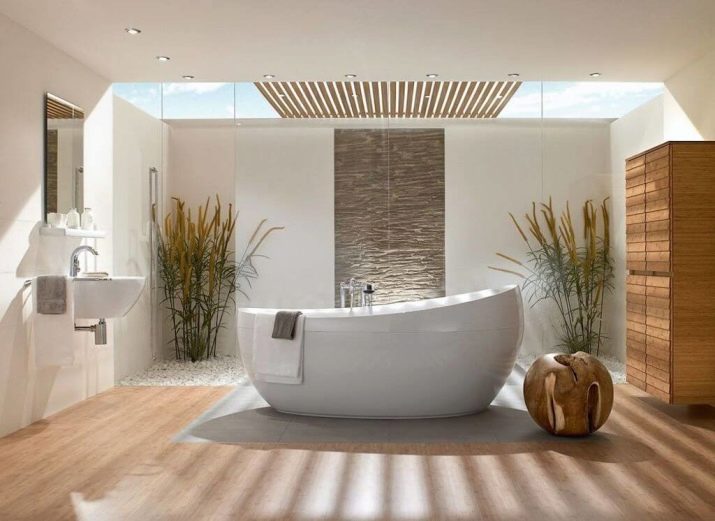
Features
Fonts for bathrooms are usually made of only 3 materials: cast iron, steel and acrylic. Each of them has its fans and has individual characteristics of operation.
Cast iron
The first material that was massively used in the manufacture of bathtubs was precisely cast iron. In fact, This material is a strong alloy of iron and carbon. The first cast-iron bathtubs were made back in 1925 by the Spanish brothers Roca, who decided to expand the range of their cast-iron products and came up with the idea of creating durable cast-iron bathtubs. The Roca brand remains one of the world leaders in the production of high-quality and durable cast-iron bathtubs.
The strength of cast iron products can vary greatly depending on the amount of elements such as silicon, manganese and sulfur in the alloy. A high-quality cast-iron bath should have walls with a thickness of at least 0.5 cm, as well as a thick enameled coating, which is applied in two stages in the factory.
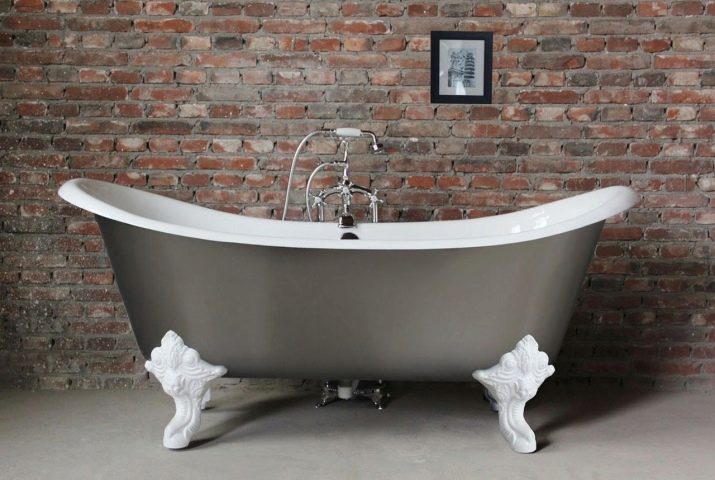
Steel
Steel is considered more affordable than cast iron. - the price of high-quality steel products can be several times lower than for the simplest cast-iron models.One of the key features of steel and metal fonts is a huge variety of shapes and sizes - among steel baths there are a lot of round, angular, asymmetric and polygonal models.
A good steel bath should consist of steel sheets with a thickness of 2.3 mm (if we talk about thin-walled models) to 3.5 mm (models with standard thickness). Any steel bath is additionally covered with a layer of enamel, which is usually thinner than that of cast-iron fonts.

Acrylic
Plumbing and bathtubs made of acrylic and kvaril (a more durable version of acrylic) are still considered a novelty. Acrylic is a a synthetic polymer that is made from acrylic acid - the result is a material with high resistance to wear, UV rays and oxygen exposure. Acrylic is valued by many consumers. for a glossy, smooth and quickly heated surface.
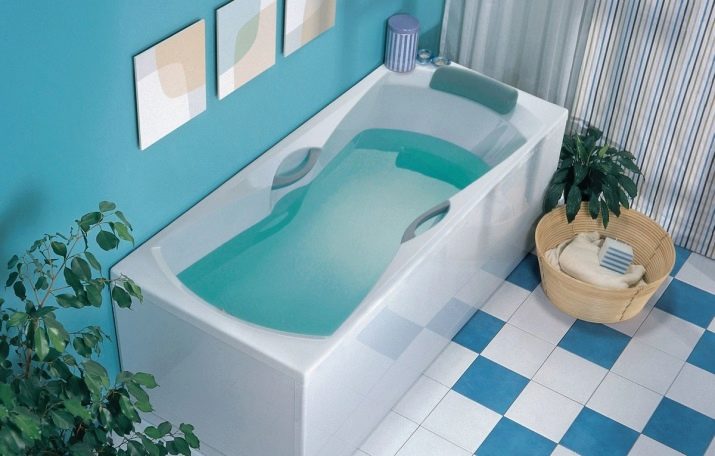
Acrylic bathtub is made in specific conditions using two technologies.
- In a special vacuum chamber, acrylic sheets are bent into the desired shape. The product obtained in this way will not be particularly durable - the walls of such a bath will bend at the slightest pressure and can be deformed even by cold water. To strengthen such a bath, the surface of the product in several layers is treated with epoxy resin and fiberglass.
- On the glass fiber frame, made in a certain form, a layer of acrylic is applied. This technology of manufacturing acrylic bathtubs is considered more reliable.
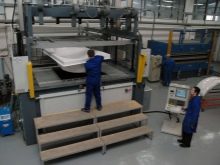
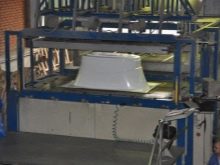

Comparative characteristics
To understand which of the elements is the best for creating bathtubs, a comparative description should be made with the visual differences of a particular material. The following are factors that will help determine the difference between steel, cast-iron and acrylic bathtubs.
Installation
From the point of view of installation and fastening, the most problems will be caused by the cast-iron bathtubs alone to bring such a font into an apartment and install in the bathroom will not work. In addition, such tanks need good support in the form of additional side mounts or special legs. And the cast-iron bath should stand on a flat and rigid surface that will not deform under the weight of the structure.
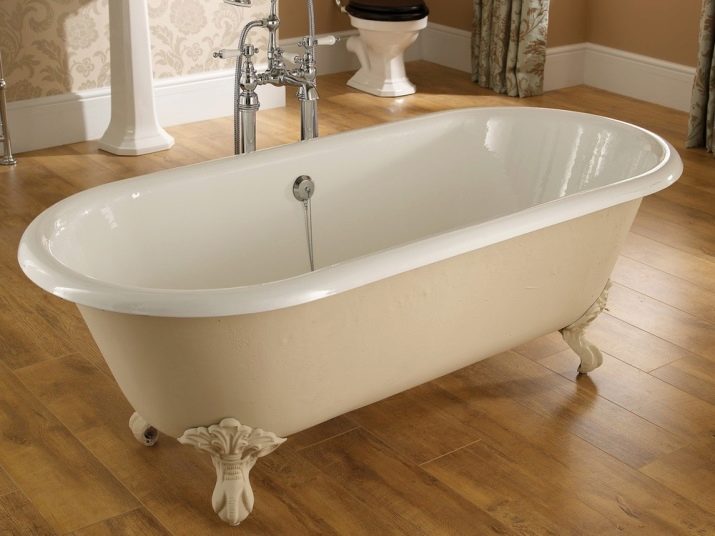
A steel bathtub is also mounted on legs, however it is quite lightweight to cope with its installation and connection to the sewage system alone. This is the easiest option in terms of installation.
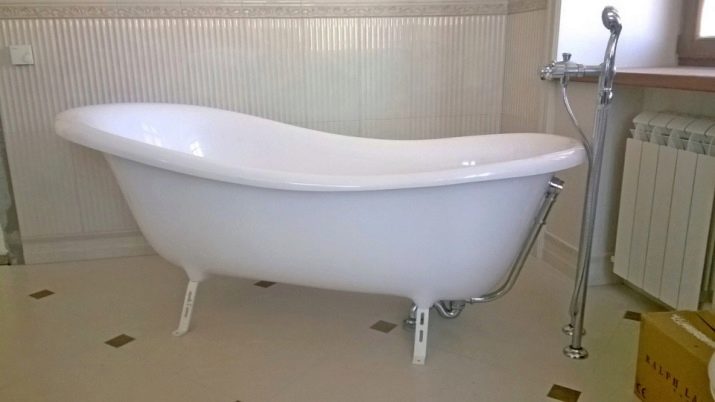
Acrylic font can only be installed on a supporting frame that will not allow it to deform. The frame must be installed in advance, together with the layout of the installation of communications for the supply and drainage of water.
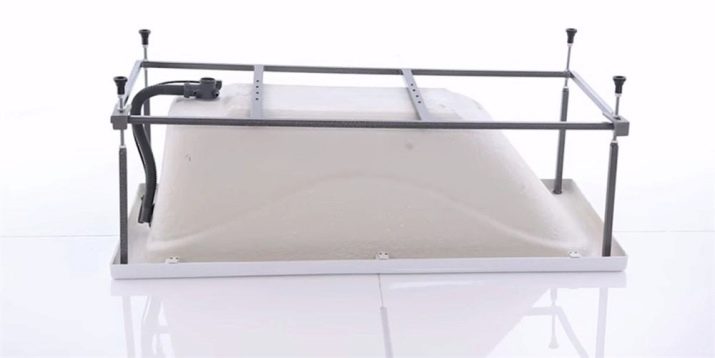
So, steel products become leaders in this case, then acrylic constructions (where frame installation is necessary) are located, but the last place is deservedly taken by heavy cast-iron fonts.
Care
Caring for bathtubs includes regular cleaning of products from dirt to maintain a pleasant appearance.
Cast iron in the case of care is the most picky - It is processed with a thick layer of enamel that does not wear off over decades even with not particularly careful use and tolerates the effects of cleaning chemical elements.
Steel fonts also have a layer of enamel, which makes the surface of the font more pleasant and smooth, but it is usually a little thinner than cast-iron bathtubs. therefore when caring for such products, you need to be careful not to use aggressive cleaning agents if possible.
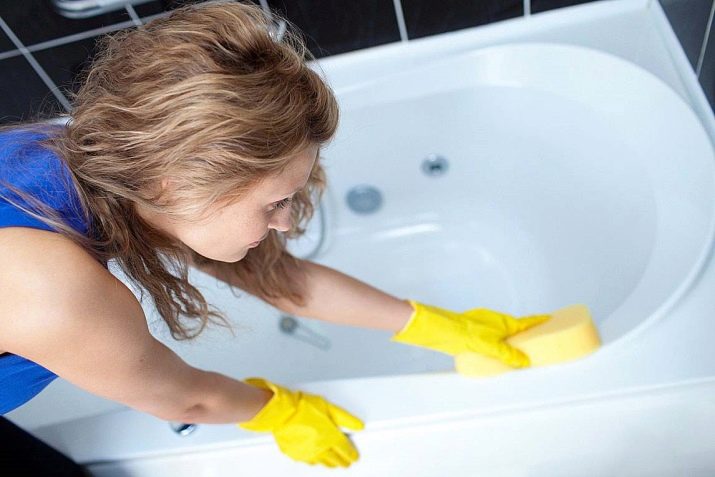
Acrylic bathtubs are not so stable: they do not have an enameled and protective layer that will protect them from scratches and mechanical damage. When caring for an acrylic product, do not use abrasive products or aggressive cleaning chemicals.
When comparing all the factors, it becomes clear that the most picky thing to care for is cast iron, steel in second place, but acrylic modestly dropped to last, third place.
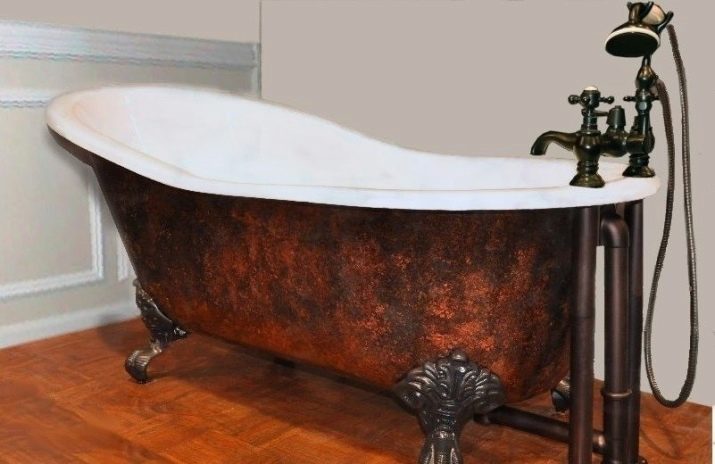
Duration of use
Today, pig-iron products are considered the most durable - a long service life is explained by the rigid and incredibly strong structure of cast iron and the high density of enamelled coating. Average cast-iron baths can last up to 50 years or more.
Steel products are not so hardy, but still reliable - Usually they are successfully used up to 30 years.
As for the fonts made of acrylic, then, according to experts, they are able to last a maximum of 10-15 years with careful care.
Once again, cast iron takes a leading place, and acrylic remains at the very end. Steel fixed in second place.
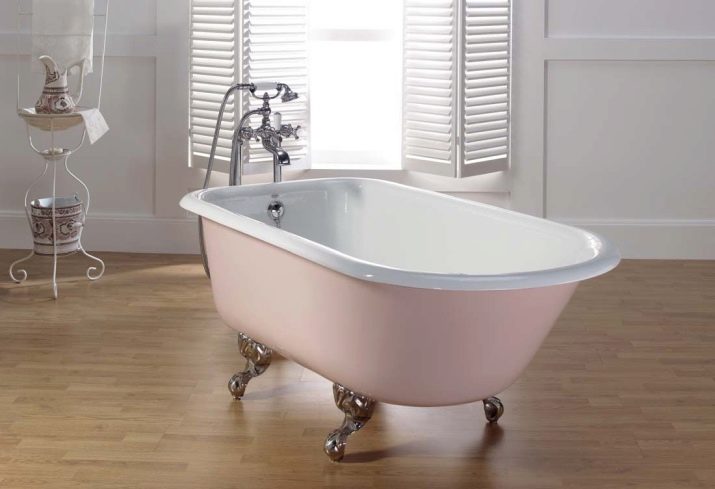
Forms
One of the most important factors for buying from consumers who need a bathtub in a special design or style is the variety of shapes.
If we talk about cast iron, then here is not such a big choice - most brands offer only rectangular or oval bathtubs made of cast iron. Unfortunately, the strong but brittle structure of cast iron does not allow the creation of products of more modern and diverse forms from this material.
As for steel and acrylic, here in front of buyers there is simply a huge selection of options. With the help of these materials it is possible to realize the most unusual and sophisticated forms. This is an ideal material for custom-made fonts.
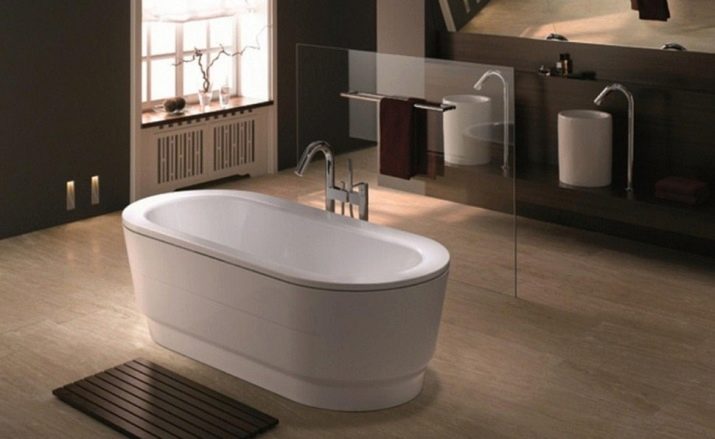
In the case of this factor, cast iron falls to last place, but the steel and acrylic models are knocked out together in a leading position.
Dimensions
This factor may be important for consumers who select a font, focusing on the strict size of the bathroom.
The few brands that make exclusively cast-iron bathtubs create fonts of strictly defined and standardized sizes. If we talk about domestic models of cast-iron bathtubs, here you will often find models with a length of 120 to 150 cm and a width of up to 70 cm. Considering European options, you can find large cast-iron fonts up to 180 cm.
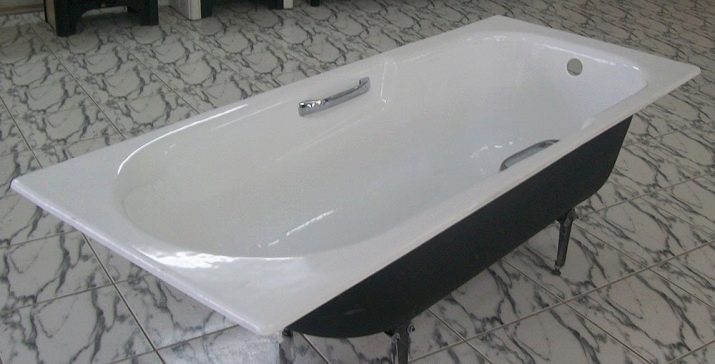
As for steel and acrylic, here the sizes do not have clear boundaries. Many European brands produce acrylic and steel products with a length of up to 190 cm and more, a width of 90 cm and a depth of 81 cm. In this case, everything is determined only by the wishes of the customer.
As a result, cast iron is again in last place, but steel and acrylic have to share a leading place.
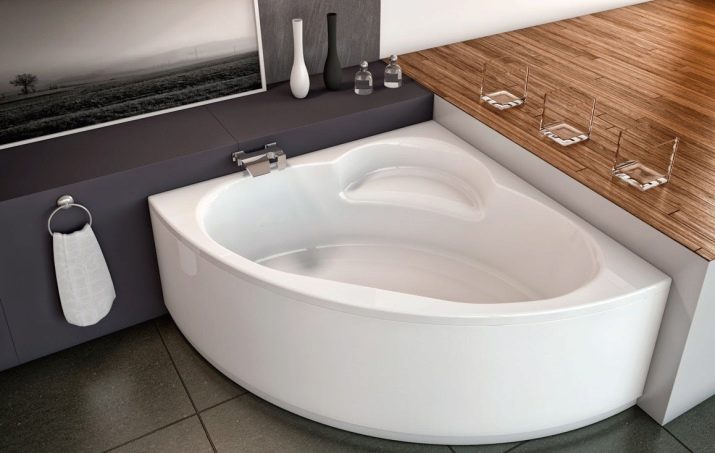
Features of accommodation
Typically, fonts are installed in two places - along one of the walls of the bathroom or directly in the center of the room. In some styles, the placement of the font can greatly affect the entire interior design of the bathroom.
It is preferable to install cast iron along one of the walls. - This is due to the weight and the peculiarity of the fastening of such structures. In the corner, a cast-iron font will also be difficult to install. If you want to install such a model in the center of the room, it will need strong supporting legs.
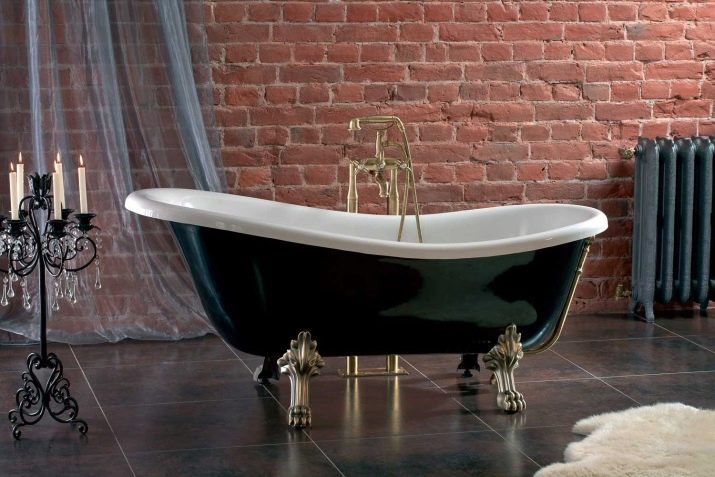
Due to their light weight and variety of shapes, steel and acrylic bathtubs can be installed in absolutely any place - in the corner, near the wall or in the center of the room.
In this case, a lot depends on the shape of the font - the same corner models will be impossible to place in the center of the room.
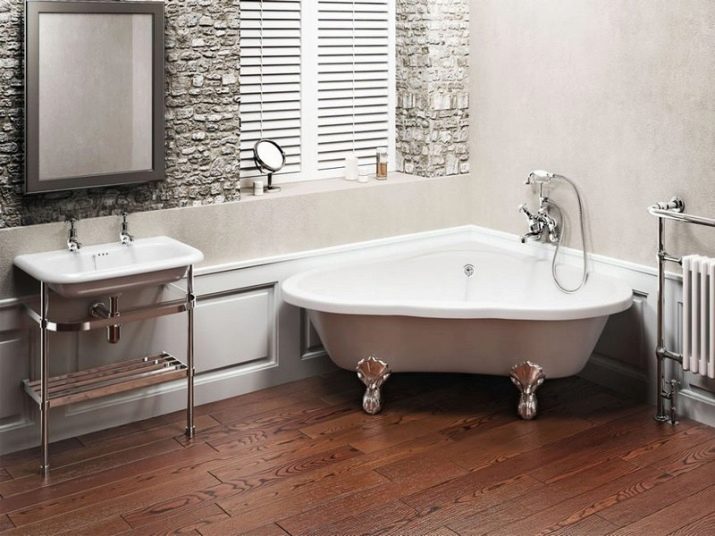
Comfort and convenience
The comfort of using any bathtub depends on several factors.
- Heat saving. Cast iron heats up slowly, but retains heat for a long time. Acrylic heats up quickly and also remains warm for quite some time. As for steel, it heats up quickly, but almost instantly cools.
- Noise level. Acrylic and thick-walled cast iron surfaces do not make noise when water gets on them. Steel, on the contrary, is very noisy and needs sound insulation with mounting foam.
- Deformation. If thin steel and acrylic are subject to deformation during temperature jumps, then high-quality cast-iron fonts are characterized by complete absorption of vibrations and sounds.
As a result, we can conclude that the most comfortable and convenient are precisely the cast-iron models, then come the acrylic fonts, but in the last place - steel. This conditional rating will be shaken if it comes to additional functions of modern bathtubs - handles, armrests and hydromassage can only be installed on steel and acrylic fonts.
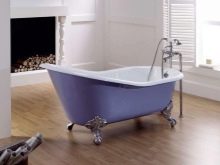

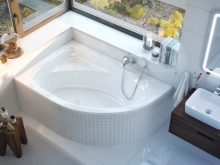
Weight
The mass of the bath depends on the thickness of the material of which it consists. So, cast-iron options are real heavyweights - up to 130 kg. Steel models take the middle position - they usually weigh no more than 30 kg. The lightest ones are acrylic fonts, which weigh no more than 20 kg.
When comparing the weight of bath models from different materials, you need to navigate for equal performance of their dimensions.
As a result, the most comfortable in terms of weight are acrylic products, then steel with a small margin, and in last place models made of cast iron, which will require more than one pair of hands to place in the apartment.
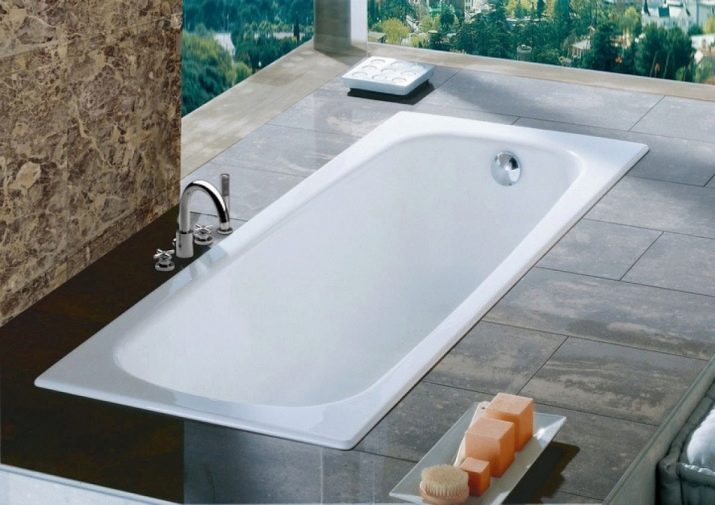
Cost
Families with a small budget primarily pay attention to the price of individual models.
High-quality cast-iron bathtubs are considered the most expensive today. If we talk about domestic models with the simplest design and design, then they can be bought for 60-70 dollars, but if it comes to luxury options, then the bar increases - from 500 to 700 dollars.
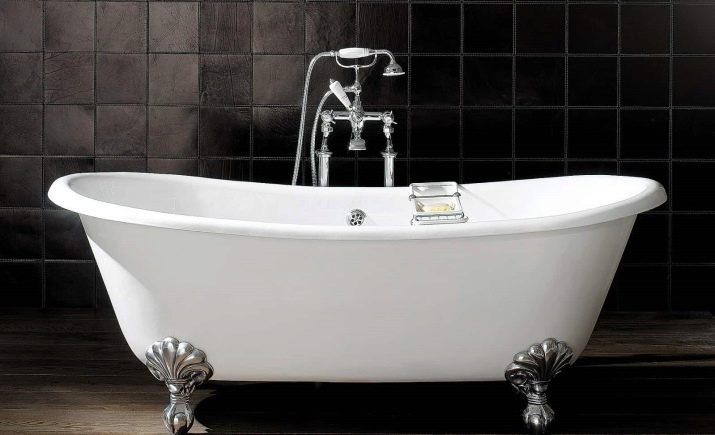
Steel font prices are much more affordable - for the simplest fonts made of steel, you will give no more than $ 50. If we talk about better European models, then the price for the latter will start at $ 100.
The modern market boasts a huge variety of prices specifically for acrylic models. Among the most budget options, you can find models from $ 60, European fonts are more expensive - from $ 150 and above. It must be borne in mind that a lot depends on the configuration and functionality - many of these products are equipped with additional functions in the form of a hydromassage system.
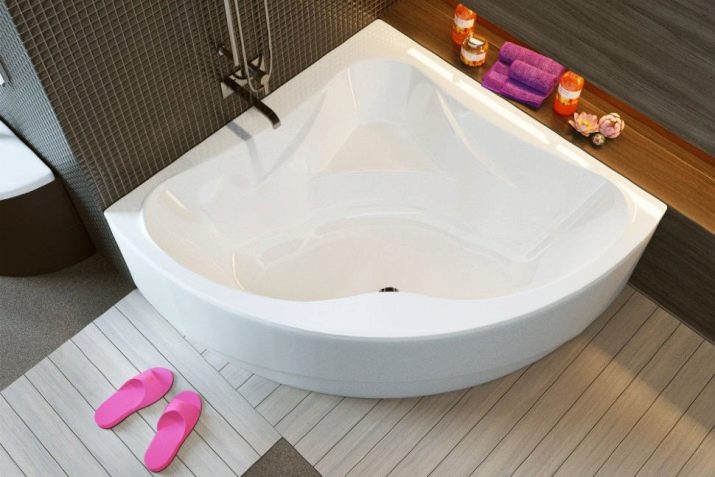
Advantages and disadvantages
Each material used in the manufacture of bathtubs and bathtubs has its own advantages and disadvantages. Below, we will consider the key pros and cons of cast-iron, steel and acrylic bathtubs.
Cast iron
Cast iron is not in vain today considered the most durable and reliable element in the creation of bathroom fixtures - this material has a lot of individual advantages.
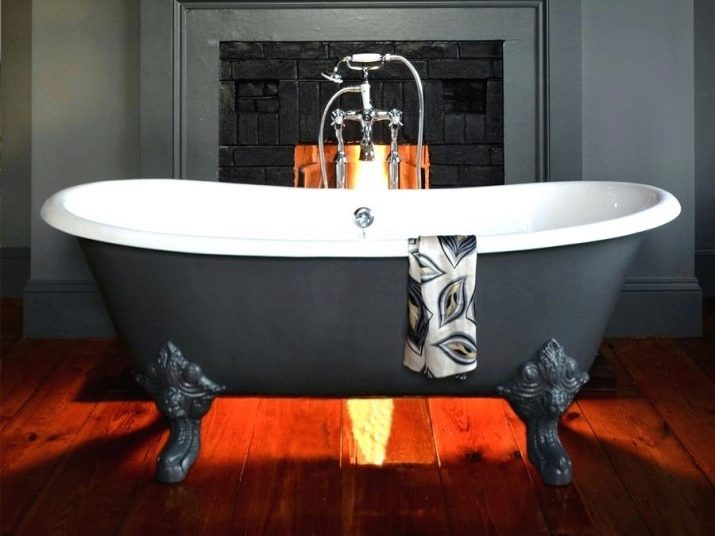
Let's start with the pros.
- Extended service life - up to 5-6 decades. None of the other materials can boast such durability.
- Cast iron is characterized high mechanical and chemical resistance - he is not afraid of deformations, bumps and care with aggressive cleaning products. In the case of cast iron, you only need to worry about the integrity of the enameled coating.
- Cast iron can be easily distinguished if possible. keep warm for a long time - in such fonts you can bask for several hours in hot water.
- Enamel coating eliminates the presence of pores in the surface of cast iron, which means that such products do not clog and are easily cleared of dirt.
- Water entering a cast-iron font will not make a loud noise (however, it all depends on the thickness of the walls of the bath).
- Cast iron resistant to sudden changes in temperature and will not warp from prolonged use.
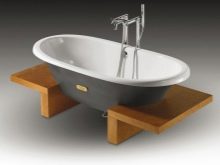

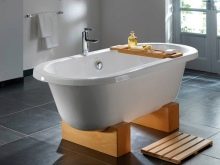
But there are also disadvantages.
- If we compare the weight of different bathtubs, then cast-iron are the undoubted leader - due to the large size and large mass, cast-iron bathtubs will need high-quality fastening, and may also cause problems when transporting to the apartment (it will be impossible to lift such a structure on the elevator due to the size, and 3-4 men will need help to lift it to the upper floor )
- Cast iron structure allows to make fonts of only standard shapes and sizes - usually cast-iron bathtubs have an oval, rectangular or round shape. Among the multifaceted and asymmetric models of bathtubs you will not find a single cast-iron.
- Cast iron products and plumbing often more expensive than the highest quality acrylic products.
- After prolonged use, the enamel layer of the cast-iron bathtubs gradually becomes thinner. - cracks, chips and roughness may appear, which cannot be eliminated at home.
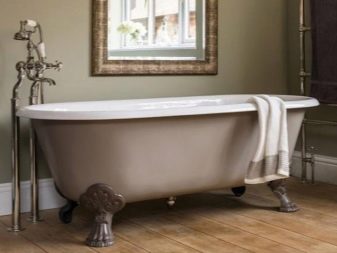
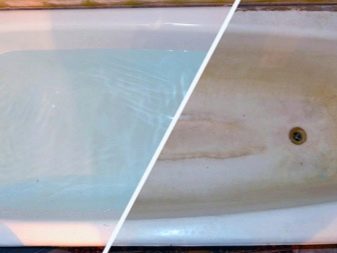
Steel
Steel is a cheaper, but relatively reliable material in the manufacture of the font. Therefore, it has a lot of advantages.
- Relatively light weight in comparison with cast iron products - usually from 15 to 50 kg, which is half the weight of cast iron products.
- Ability to create steel bathtubs in a variety of shapes, sizes and designs.
- Steel resistant to mechanical stress and reacts calmly to chemicals in cleaning products.
- Lowest and most affordable price in comparison with acrylic and cast iron products.
- Steel baths are usually coated with a layer of enamel, thanks to which such structures are easy to care for.
- The special design of the steel bathtubs makes it possible to supply such fonts additional functions and elements which makes using the bathroom even more comfortable. Among the most popular add-ons are the hydromassage function, additional handles, holders and head restraints.
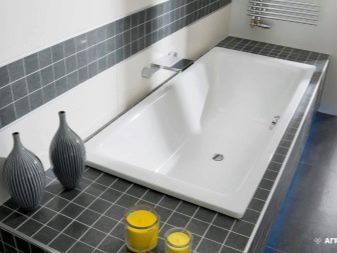
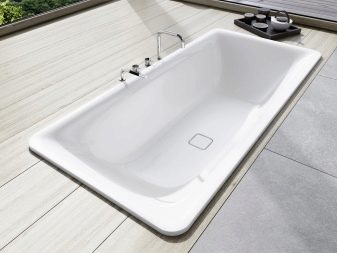
Such products are not without drawbacks.
- Steel baths are considered the noisiest, however, much depends on the thickness of the steel sheet from which the font is made. To reduce the noise from steel bathrooms, some owners process their outer surface with foam.
- Steel quickly heats up from water, but cools down just as quickly - in these baths you can’t soak for more than half an hour.
- Thin-walled steel bathtubs may deform due to sudden changes in temperature. The same applies to deformations from physical impact.
- Steel without additional coating and enamel layer susceptible to corrosionand therefore cheap steel products very quickly lose their appearance and lose their integrity.
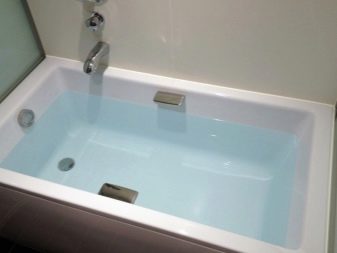
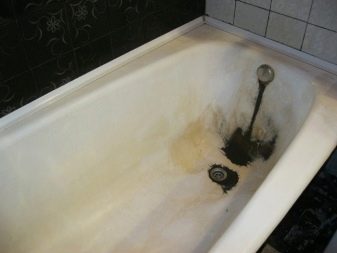
Acrylic
Acrylic today is considered by many to be the optimal material for the manufacture of bathtubs, but there are also pros and cons here.
There are a lot of pluses.
- Acrylic heats up quickly from running water and retains heat for a long time.
- Acrylic products possess light weight. This greatly simplifies their transportation and installation in the bathroom.
- Acrylic can create bathtubs a wide variety of shapes and sizes.
- Acrylic structure allows you to equip fonts additional functions - hydromassage, handles and other comfort elements.
- If the acrylic bath breaks, you can always contact a specialist who can in the short term restore the product.
- Acrylic has smooth, glossy and pleasant to the touch surface, which is nice to stand on or lean on.
- This material does not lose attractive appearance for many years and with careful care a very long time can be used.
- Water entering the acrylic bathtub No annoying noises.
- Acrylic not affected by corrosion.
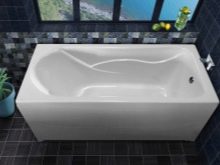

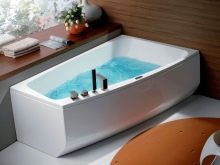
It is necessary to talk about the cons.
- Poor quality acrylic models may deform from high temperatures and under mechanical stress.
- Acrylic needs in special care without the use of chemical, abrasive and powder agents. When cleaning products from acrylic, you can not use hard brushes - this material is easily scratched.
- Acrylic bathtubs not recommended for people with large pets. The latter during washing can cause significant damage to the surface of the product with their claws.
- The strength and stiffness of acrylic is negligible in comparison with steel and cast iron, and therefore, when using such a font, one must be extremely careful and avoid mechanical shocks on the surface of the product.
- Quality acrylic products can not be called cheap - bathtubs made of this material cost less than cast iron, but can also affect the consumer’s budget.
- Acrylic font needs additional fastening or frame, which will distribute the pressure from the water and fix the shape of the bath.

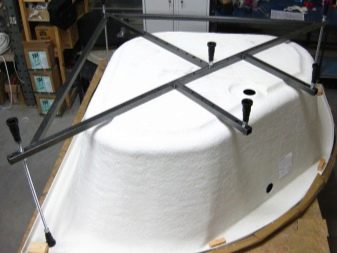
Which is better to choose?
The font can be considered the main element of any bathroom, and therefore, the choice of such plumbing should always be treated very carefully.
- Forms. Bathtubs in standard oval or rectangular shapes are made of absolutely any materials, but asymmetric, multifaceted bathtubs and fonts of unusual shapes can only be made of acrylic or steel.
- Sizes. In the plumbing market, dimensional bathtubs are usually found precisely from acrylic, from steel and cast iron they create bathtubs in standard sizes.
- Style and design. The most modern bathtubs with a unique design are usually made of acrylic - this is the most flexible material for creating unusual designs.
- Price. When evaluating the budget, there is no more practical choice than a steel font. You simply will not find high-quality and cheap bathtubs made of cast iron and acrylic, or they will last no more than 2-3 years.
- The presence of animals in the house. Scratches and chips that can remain after bathing animals are best seen on acrylic, but the enamel layer in cast iron and steel models is more loyal to this.
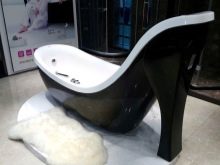
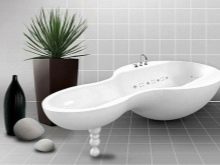
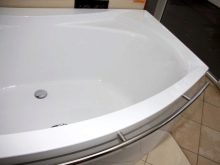
The recommendations below will help you determine the right bath option directly when buying a model in the store.
- Carefully inspect the geometry of the bath - its sides should be even, and there should be no bends and bulges on the surface of the product. If the acrylic bathtubs can still be supported by special angles during installation, then this method will not be possible with steel and cast-iron products.
- Pay attention to the weight of the product. A quality cast-iron bathtub cannot be too light. The same applies to acrylic products - the light weight of the latter can be explained by the cunning move of the manufacturer, who uses plastic disguised as acrylic to create fonts.
- Check product coating integrity - on acrylic scratches should not be noticeable, but on steel and cast-iron models there should be no roughness and darkening.

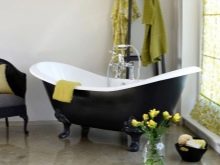
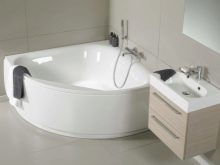
In addition, do not forget to check with the seller for all the documentation with a full description of the product and a guarantee for use.
Review Reviews
Specialists advise choosing a bath solely according to their own needs and capabilities. There is no consensus among experts about which of the above materials is better at creating fonts. Each of the elements is adapted to specific conditions of use and can show itself in different ways in a separate situation.
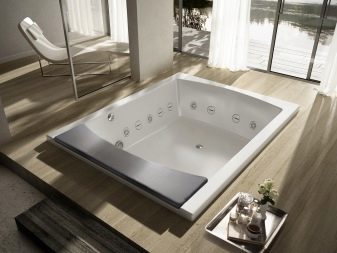
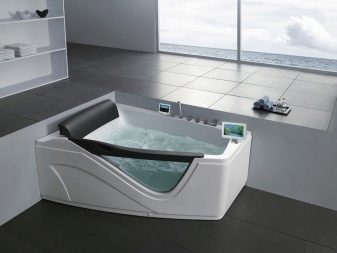

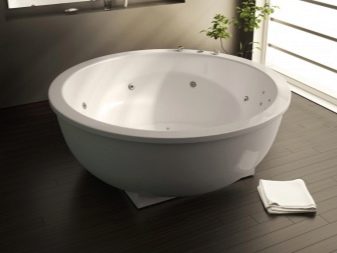
Many experts adhere to the following practical opinion regarding the choice between acrylic, steel and cast-iron bathtubs: over 20 years, the consumer will change 4 acrylic bathtubs, 2 steel and a maximum of one cast iron - the choice is obvious.

To see which bath to choose, see the video below.
